Politicon.co
Stalin's war against his own people - on the 80th anniversary of the Great Terror
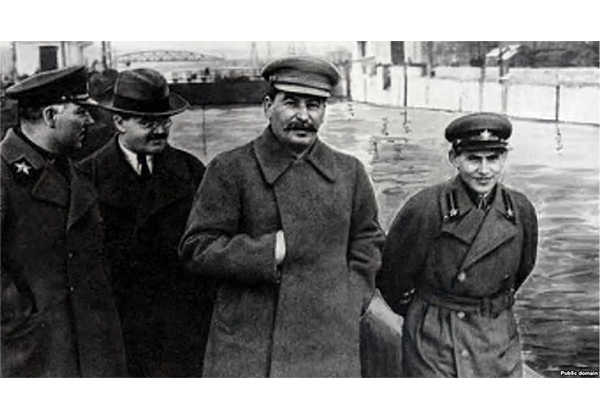
Stalin's brutal campaign against the Bolshevik power elite, which took place during the so-called "Great Terror", reminds of the events in France during the time of Jacobin terror. But the differences are also huge. This column deals with "Great Terror" and its accompanying circumstances.
Commemorative plaque with photos of victims of the Great Terror, who were shot at the NKVD shooting range in Butovo near Moscow.
After only two years, the representatives of the threatened Jacobin leadership opposed the tyrant, and on the 9th of Thermidor in 1794, Robespierre's reign of terror came to an end. In the Soviet Union, on the other hand, a kind of "Thermidor," the reckoning with the tyrant, took place only posthumously at the 20th Party Convention of the CPSU in February 1956, three years after the death of Stalin.
Identity crisis of the Bolshevik Party
In 1937, Stalin's "Great Terror" reached its climax. The Russian regime`s critic Vladimir Kormer described the atmosphere of that year retroactively with the following words:
All living things were destroyed, the nation turned into a slavery... The uncontrollable, all-pervasive fear paralyzed all... It was unbearable. One had the feeling...that earth could no longer bear it.
The development depicted by Kormer was preceded by an unprecedented identity crisis of the Bolshevik Party. The October revolution, which the Bolsheviks described as the greatest revolution in the history of mankind, sought the worldwide realization of such Marxist postulates as the conquest of "world capital," the abolition of private property, and the removal of class society. In the first years after the October revolution, however, the Bolsheviks did not succeed in either the international or national framework. The proletarian revolt of the world proved to be temporary, especially after the failure of the so-called "German October" in 1923, and also in Russia, the "proletarian offensive" was temporarily being stopped during the Russian Civil War (1918-1920). The free market and private property relations were now at least partially rehabilitated to the horror of the overwhelming majority of party members.
The ever-growing gap between the Bolshevik doctrine and reality was linked to an ever-increasing erosion of the party as an institution, in which a bitter struggle for the succession of Lenin broke out.
However, as experience shows, the erosion of institutions leads to a revaluation of people with whom one now combines different kinds of curative expectations. This was the starting point for Stalin`s double revolution, launched in 1929, which had the effect of collectivizing agriculture and the industrialization of the country.
The revolutionary offensive of the Bolsheviks inspired by utopian longings, which had failed in the first attempt - during the Russian Civil War of 1917-1920 - now succeeded. Private property - the most hated object of the orthodox Marxists - was abolished. All the economic resources of the country were now subjected to the statism of the central planning authorities.
This unprecedented totalitarian upheaval from above could not be realized with the party that Stalin inherited from Lenin. Only an obeying and non-arguing party could break the desperate resistance of 130 million peasants who opposed their expropriation.
The Bolshevik type changed, wrote the Russian exiled historian Georgy Fedotov in 1932. For the party leadership unconditional fulfillment of the "general line" had become much more important than voluntary recognition of the Bolshevik ideas. The discipline within the party was ranked higher than revolutionary idealism.
And what could be better served by Fedotov's disciplining of the Party than the establishment of a leadership system with an infallible leader at the top?
The Stalin cult
The Stalin cult received a quasi-official consecration at the 17th Congress of the Bolsheviks in January 1934, which celebrated the "construction of socialism in a country", which meant the conquest of the Soviet peasantry. Not only representatives of the Stalin faction, but also Stalin's former critics from the ranks of the defeated party leaders, took part in the praises of Stalin. Nikolay Bukharin, who had described Stalin as the grave-digger of the Russian revolution in 1929, declared at the 17th Congress:
Stalin was perfectly right when he smashed the theses of the right devotees formulated above all by me. He has brilliantly applied the principles of the Marxist-Leninist dialectic.
One of the leaders of the so-called "left-wing opposition", Lev Kamenev, noted in 1927,
The epoch in which we live becomes part of history, and this is, out of the question, as Stalin's epoch. Each of us is obliged to defend the inviolability (the authority of Stalin) with all the forces at his disposal.
These submissive sentences came from the same politician, who in December 1925 - at the 14th Congress of the Bolsheviks - heavily questioned Stalin's leadership qualities.
The members of the Stalinist faction were still trying to surpass the declarations of "love" by the former opponents of the Secretary-General. But not everything was ideal behind the magnificent Byzantine façade of early Stalinism. Since the beginning of the Stalinist revolution from the top, the Party had been bubbling on the inside, while showing unity to the outside. Many party officials were shocked by the inhumanity with which the regime was fighting against the defenseless peasants. Many felt themselves challenged by Stalin's apodictic style of leadership and strove to restore the inner-party democracy, which they thought were still dominant in the party during the twenties. This dissatisfaction manifested itself even during the 17th Congress, the "Congress of the Winners", which on the outside represented an unprecedented triumph of Stalin. In the secret elections to the Central Committee, Stalin unexpectedly received far fewer votes than other popular party leaders, especially Sergey Kirov. Thus, at the beginning of the thirties the party was not a will-less tool in the hands of the leadership.
At the 17th Congress, the Bolshevik Party behaved as an all-powerful demiurge, capable of creating a new man overnight. In atotalitarian controlled society, however, such a self-aware party constituted a foreign body. The leadership system designed by the party for its own stabilization began to be directed against itself. At the 17th Congress, Stalin complained about the "false consciousness" of some Communists. As an example of the "confusion" in the minds of many Bolsheviks, Stalin called the thesis of the spontaneous growth of the Soviet Union into a classless society:
They are in the utmost rapture in anticipation that there will soon be no more classes - so no class struggle, so no excitement and worries, so that one can put the weapons aside and sleep comfortably in the expectation of the classless society.
At first it was not quite clear how Stalin wanted to fight the "false consciousness" of many Communists. It was only during the "Great Terror" that this question was gradually clarified - the overcoming of the "false consciousness" was essentially achieved by the elimination of many of its bearers.
What was the purpose of the Moscow show trials?
The extermination campaign, launched by the Stalin forces in 1936 against their most important political support, the Soviet power elite, is one of the most amazing phenomena in recent history. Both the motives of the perpetrators and the behavior of the victims are a source for mysteries to research, especially since the lines between victims and perpetrators during the Great Terror were often fluid. The Great Terror was symbolized by the Moscow show trials, which - despite the partial opening of the Russian archives - still pose a problem for interpretation. It is true that show trial against political opponents belonged to the most important features of the Soviet judiciary ever since the birth of the Bolshevik regime. The first Moscow trial began on 19 August 1936, and opened a whole new chapter in the history of the USSR. Here, some of Lenin's closest companions and co-founders of the Soviet state were accused of unprecedented crimes against their own creation.
But it was not just these ghostly accusations that represented the actual sensation of the trial, but also the fact that the defendants essentially accepted the allegations against them. Similar to the chief prosecutors, they also felt that their crimes were so reprehensible as to deserve any punishment. Their fate was to be a warning for other Communists. They should have known that any doubt about the Party line and Stalin's wisdom, would inevitably lead into the abyss.
Many observers believe that Stalin, with the help of the "Great Terror", wanted to get rid of his inner-party opponents, who questioned his infallibility. In this context, they point to the Moscow trials, which were, in fact, directed primarily against former critics of Stalin. In reality, however, the dispute with the former party opposition from the left and from the right represented only a minor aspect of the "Great Terror." The essence of the "Great Terror", did not mean the elimination of the party leaders who had played no role in power politics since the end of the 1920s, but the removal of the current ruling power elites. The party base as well as the so-called "partisan Bolsheviks" - the simple Soviet men - were called upon to criticize and denounce arrogant party officials. Such "intrepid little people" - denouncers - were now revered as heroes. There should be no inviolable authorities, Stalin announced at the notorious Central Committee plenum of February-March 1937:
We, the leaders, should not be presumptuous and should understand that being members of the Central Committee or People's Commissars, does not mean that we have all the knowledge necessary to exercise the right leadership. The rank in itself neither provides knowledge nor experience.
This pseudo-democratic motto was, in fact, a battle cry. It was meant to lead to a bloody settlement of Stalin not only with his opponents, but also with his closest companions who were staunch Stalinists and occupied key positions in the party, state, military and economic apparatus. It was part of the essence of the Stalinist system that its creator distrusted the controlled – the subjected society -, but also the controlling omnipotent party and state apparatus even in the tightly controlled society. This explains his extermination campaign against large parts of the communist elite. Stalin apparently thought his regime was safe when no one felt secure in his sphere of power, including his closest companions.
The decapitation of the ruling Stalinist elite, was carried out essentially in secret, not before the eyes of world publicity. What was the meaning of the Moscow show trial of 1936-1938? Did they merely serve to divert the attention of the outsiders to a subterranean site of the "Great Terror"? Hardly likely. In the Stalinist world, which at first sight was absurd, the show trials, with their ghostly accusations and no less ghostly confessions of the defendants, performed an important function. They were to prove that Lenin's closest allieswere almost invariably made up of traitors and conspirators who were striveafter his life, while Stalin unmasked and punished all those enemies who hid themselves under a friendly mask. And it was to one of the central postulates of the Stalinist world that one should not trust any appearance. Every citizen, even the most prominent functionary in party, state, or military apparatus, can in fact be an enemy. The uninterrupted vigilance was, therefore, probably the most important virtue of the Soviet citizen. But woe to him when he denounced a dignitary, who from the point of view of leadership was not yet classified into the category of enemies. Equally bad, if not worse, was the not timely denunciation of a functionary who had to play the role of the enemy from the reasons unfathomable to the overwhelming majority of the Soviet citizens. The term "role" is of particular importance in this context. The Moscow show trials were merely role-games and they were executed according to carefully elaborated scripts. Nothing was left to chance. In essence, these playful plays served only one purpose-the glorification of Stalin. Not only the accusers, but also the accused had to contribute. Thus, for example, the already mentioned Lev Kamenev wrote in his concluding plea in August 1936:
No matter how my judgment turns out, I regard it as just. Do not look back! Go forward! Follow Stalin together with the Soviet people!
The Moscow show trials sent the following message to world: Even the worst opponents of the Soviet state had to admit that Stalin was the most brilliant statesman of all time. To this extent, the founders of the Soviet state, who had already beendisempowered by the end of the 1920s, shortly before their death performed the last service and contributed tothe stabilization of the Stalinist tyranny.
The Bolshevik "Code of Honor"
There could be no talk about a systematic resistance of the Soviet power elite to the tyrant. Researchers coulddo not find any signs of organized resistance even within the Red Army. Moreover, many military leaders participated in Stalin's elimination campaign against his long-time companions and friends.
The behavior of the Bolshevik power elites differed fundamentally from that of the Soviet peasantry, which at the time of the collectivization of agriculture had desperately resisted. These different attitudes can be explained primarily by the fact that the Bolshevik oligarchy much more strongly identified themselves, than had been the case with the peasants, with the state, which led a ruthless terrorist campaign against them.
The Bolshevik victims of Stalin generally felt bound to the "Bolshevik code of honor", which had arisen in the Lenin period. This Code prohibited the use of force against internal party opponents. The majority of the Bolsheviks remained faithful to this tradition even during the Great Terror. The violation of the "Bolshevik code of honor" did not come into question, despite the fact that Stalin absolutely did not respect taboos when combating his party opponents. It must not be forgotten that the old Bolsheviks were by no means pacifists. They had absolutely no misgivings to use terrorist measures of a brutal kind against the so-called "class opponents." However, they were unable to categorize Stalin as a "class opponent."
The dynamics of the terror
The regime's terrorist campaign was not limited to the power elite. It severely affected wider population strata, which was not adequately recorded by the world public, who was focused on the Moscow show trials. A special commission, which investigated the extent of the "Great Terror" at the beginning of the 1960s, presented the leadership of the CPSU with the following figures:
In the years 1937-1938, 1,372,392 people were arrested, 682,692 of them executed. The number of party members or party candidates who fell victim to reprisal was 116,885. The overwhelming majority of victims were therefore not party members. Mostly targeted were the "kulaks" (wealthy farmers) during collectivization and members of the so-called "hostile nationalities" who were themselves or their ancestors from states that led an anti-Soviet policy: Poles, Germans, Latvians, Finns among others.
In April 1938, Georgy Fedotov, a historian in exile, characterized the events as follows: "Stalin is waging a war against all Russia if this one sided slaughter of ... defenseless prisoners can be called a war ... A man - against the whole country. The situation of Russia has never been so desperate" (Fedotov, in this case, equates the USSR to Russia).
If you consider all this, the fact that about half of the respondents to a poll in Russia today value Stalin's role in the history of their countrypositively seems bizarre. One must not forget that these Stalin-admirers are often the offspring of the victims of the tyrant. In this context, one can recall the famous verse by the Russian poet Fyodor Tyutchev: "Russia cannot be understood…”
After the end of 1938 –following the replacement of the head of the security agency Nikolay Yezhov by the no less notorious Lavrentiy Beria - the terror in the Soviet Union somewhat diminished. But this had little to do with a stronger resistance on the part of the victims. The Stalinists simply no longer considered the continuance of the endless terror, which threatened to destabilize all the pillars of the party and state apparatus, to be opportune.
About the author:
Prof. Leonid Luks was born in 1947 in Sverdlovsk (today Ekaterinburg). He studied in Jerusalem and Munich. From 1989 to 1995 he was Deputy Head of the East European Editorial Office of the Deutsche Welle and at the same time an assistant lecturer and extraordinary professor at the University of Cologne. Until 2012, he was the head of the Chair of Central and Eastern European Contemporary History at Catholic University Eichstätt-Ingolstadt. He is the managing editor of the journal “Forum für osteuropäische Ideen- und Zeitgeschichte“.
![]()
- TOPICS :
- History
- REGIONS :
- Russia and CIS

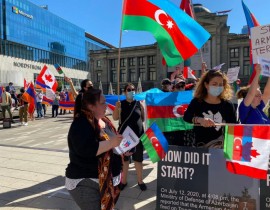
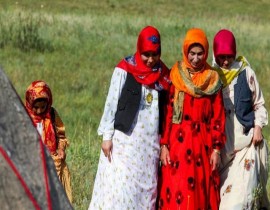
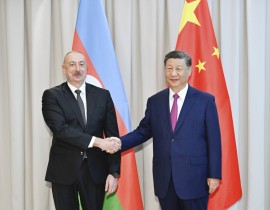
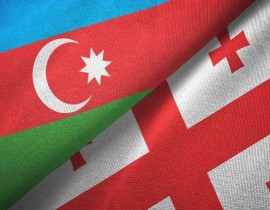
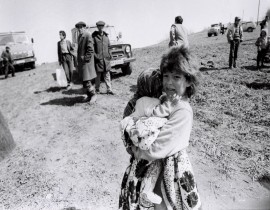
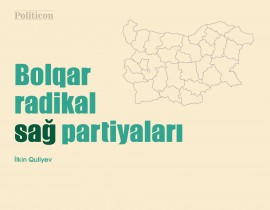
jpg-1599133320.jpg)
